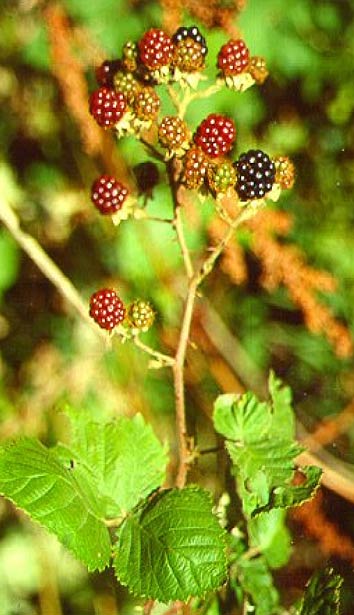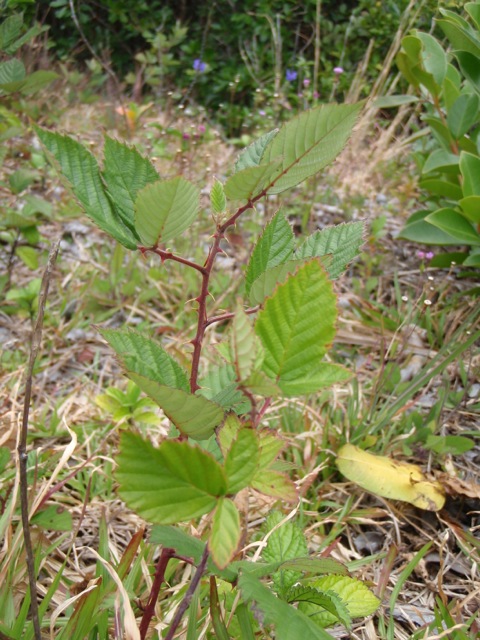Do NOT pull or cut down the plant. OISC will properly remove and dispose of the plant to prevent spreading seeds and re-sprouting. Please report Himalayan blackberry to OISC. Send photo and location to oisc@hawaii.edu or text 808-286-4616. You can also call our office at 266-7994.
Himalayan blackberry (Rubus discolor; syn: Rubus armeniacus)
Family: Rosaceae
The Division of Forestry and Wildlife of the Hawaii Department of Land and Natural Resources has designated all non-native Rubus species as some of Hawaii’s Most Invasive Horticultural Plants. Himalayan blackberry, like other invasive plants, reduces the environmental services provided by a healthy forested watershed. Due to the threats the plant poses and its limited known distributions on O’ahu, OISC is working on eradicating Himalayan blackberry island-wide.
Description:
- Spiny, woody bramble that grows as a sprawling bush, but may reach heights of 4 m (13 ft)
- White to pinkish flowers that become shiny black fruit when ripe
- Native to Western Europe, introduced as an ornamental and backyard food crop
Harm:
- Found in disturbed areas, open fields and around fresh water habitats
- Forms dense, impenetrable thickets that exclude other native plant species
- Seeds are spread by fruit-eating birds and mammals, also spreads vegetatively
- Thickets also make access difficult for hunters, hikers and other visitors to forest
- Infestations can produce 7,000-13,000 seeds per square meter, which can remain dormant in the soil for several years
- Report Himalayan blackberry to OISC by calling 286-4616 or email oisc@hawaii.edu
On O’ahu:
Two known areas on Oahu: Mauumae Trail and Palolo Valley in the southeastern corner of the island. OISC is working to eradicate these populations.





